Hoo-boy, I am relieved. I really didn’t want to have to say that the 2021 Yamaha MT-09 is worse than the 2020 model, and I don’t have to because it’s not true. I’m just not totally convinced that it’s better, either.
Yes, it feels more conventional to sit on and more stable to bend into a set of curves, plus it’s easier to ride in a city and is more likely to impress nerdy friends even, though it doesn’t seem any faster. Yamaha achieved this by adding features, colors on the dash, and dollars in the price to make it feel more advanced, and grown up. That’s the short review.
I have plenty to say about Yamaha’s 2021 MT-09, but I don’t want to revisit too much of what's been said already. The first-look article we published here on CT covered the basics of the upgrades Yamaha made, namely a larger engine, a new frame and swingarm, all-LED lighting, and a TFT dash. Also, I did a quick test of the previous generation MT-09 that allowed me to explain some of the 2020 machine’s weak points — chief among which were the Band-Aided fueling problems and sloppy suspenders. So, the real question is which of the many big things that have been changed on the MT-09 made the bike better, made it worse, or didn’t make a difference at all?
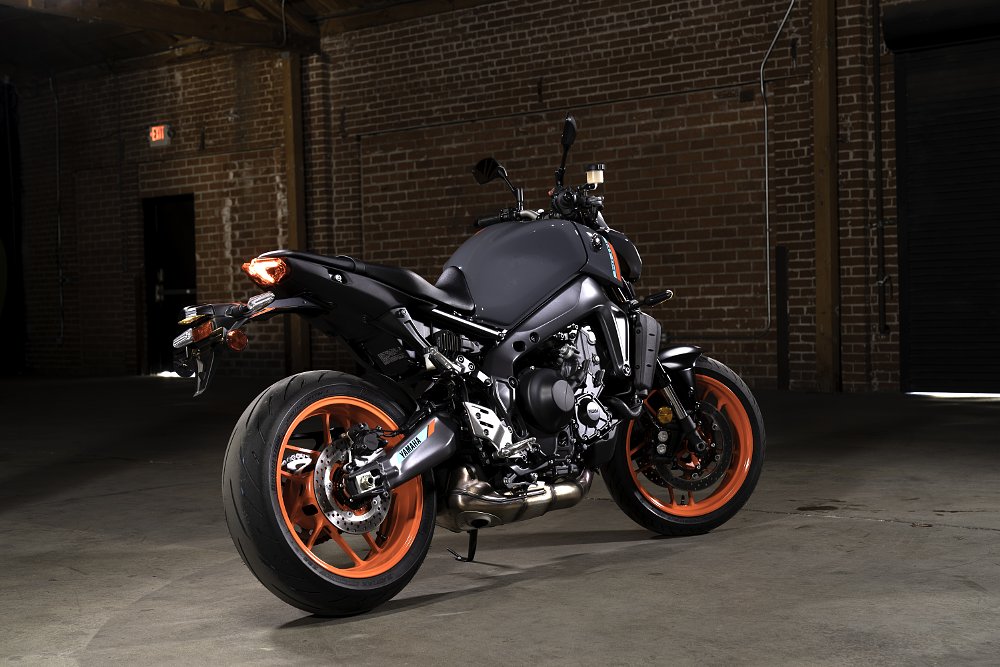
From spec sheet to canyon roads
The most notable changes to the new MT-09 have to do with the frame, electronics, and engine. First, the chassis. Dropping the steering stem more than an inch at the front of the frame allowed for shorter fork tubes, and Yamaha combined those with stiffer springs in the fork (and the shock) to tighten up handling, while reducing triple-clamp offset by five millimeters. Then there’s the frame itself, which Yamaha says is a kind of shocking 50 percent stiffer laterally. Add to that a new swingarm, lighter wheels, and new braking components and it starts to make sense how much different the MT-09 feels, even just plopping down in the saddle.
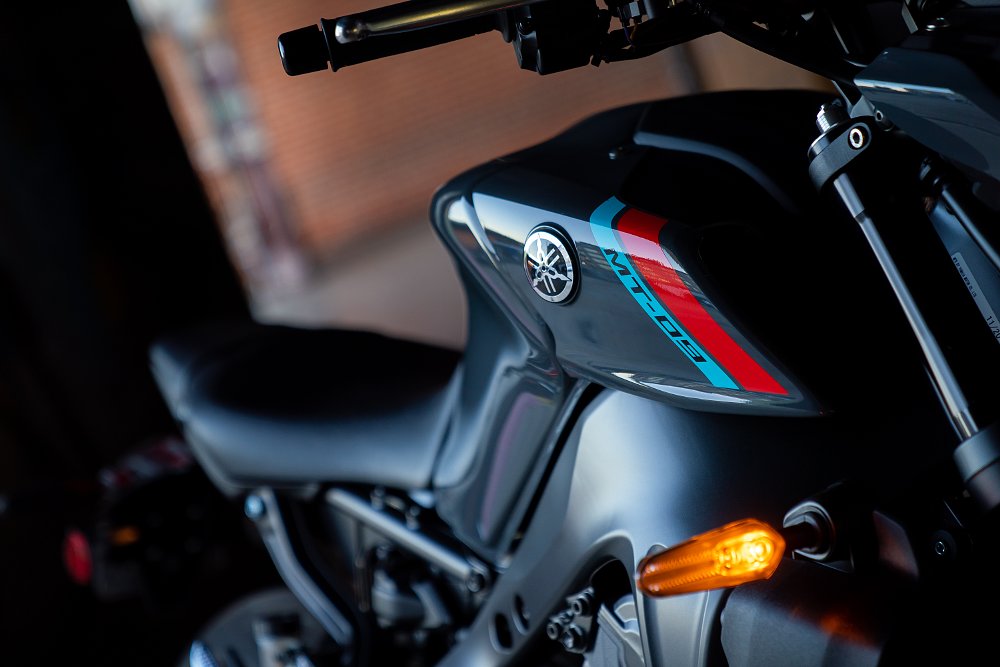
But, it’s especially fresh swinging from one edge of the tires to another along a twisty road. Where the old bike always felt a little spongy and vague, the new machine is much more planted and secure. Mid-corner bumps upset the chassis less and there’s a lot more feedback, which made me more confident to ride it like a naked sport bike instead of an undersprung commuter. I suspect the lateral rigidity in the frame has made the biggest difference, along with the stiffer springs. It also seems reasonable to assume that the shorter fork connects the steering more directly to the frame, and therefore the rider. The only downside to the chassis updates is that the steering sweep is tighter. Not relevant to a twisty road, but it proved to be a big enough change that another journalist and a Yamaha employee each commented that they almost slapped their foot on the ground doing a U-turn for the first time.
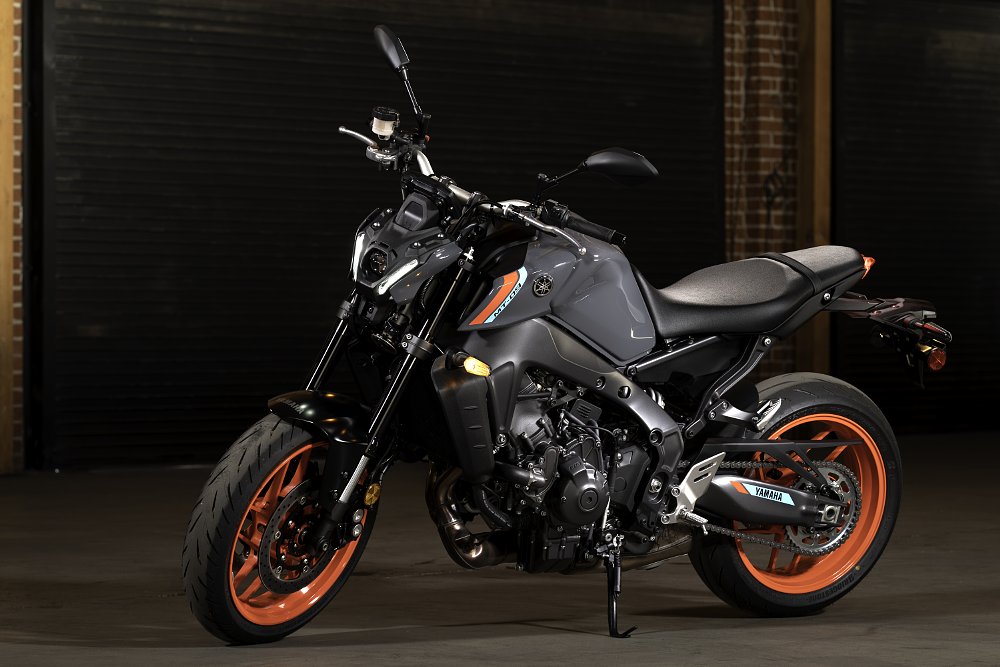
Oddly, despite jumping from 847 to 890 cc the engine doesn’t feel a lot stronger. I thought adding stroke to an already torque-rich engine would make it feel even more burly at low rpm, and that’s not to mention the tweaks to the intake, cams, simplifying the exhaust, and making the cooling more efficient. Instead of a punchier iteration of the engine we’ve come to love, it feels mostly the same. One reason is probably to do with the chassis, yet again. The previous MT-09’s flaccid shock meant the bike would squat under acceleration and constantly wanted to wheelie. Awesome yes, just not necessarily from an engineering sense. Ramping up damping and spring rates makes the new MT-09 accelerate harder and wheelie less.
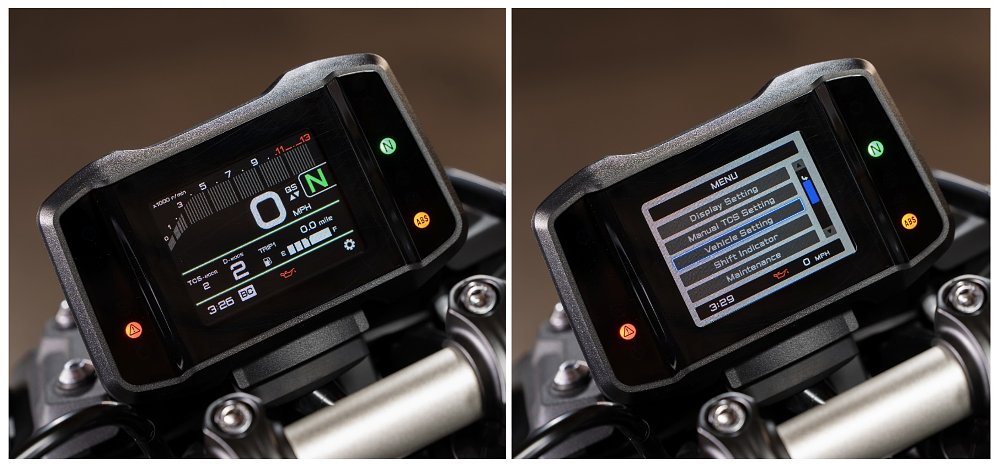
Another reason that I might have been underwhelmed is that the gear ratios in first and second gear are about three percent taller. Come to think of it, the “git-up-n-grunt” factor did seem off by about three percent. Aside from Euro5 regulations (which seem to be causing every manufacturer to add displacement in order to achieve the same basic power specs), the other thing stunting thrust is likely the increased inertial mass of the crankshaft, which results in the engine spinning up a little slower.
After I shared these notes with a Yamaha staffer, they admitted to seeing dyno figures and that most of the power gains with the new engine were above 7,000 rpm. Before it sounds like I’m bitching, if any engine were to be cursed with not feeling any faster, this Yamaha triple would be a good candidate. In other words, just because it doesn’t feel any more boisterous than it has for the past few years is fine. It still pumps out a rich, velvety noise and lofts the front wheel often enough for anyone in their right mind. One neat trick Yamaha pulled off, incidentally, was lengthening the stroke with a larger crank-pin offset while making the connecting rod proportionally shorter, therefore keeping the outer dimensions of the engine the same.
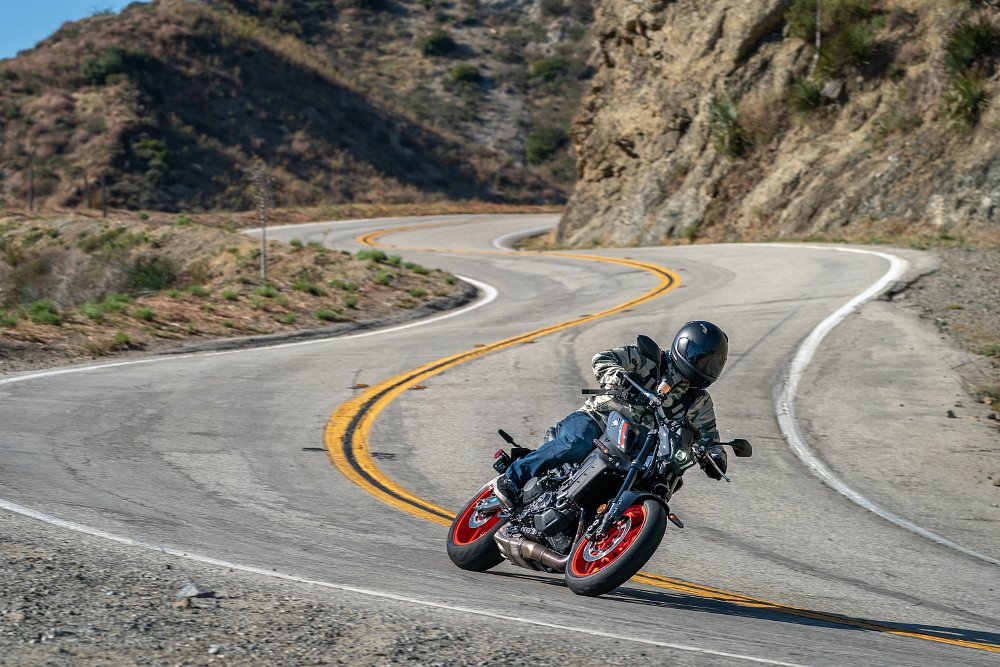
Actually, wait, there’s one more thing that could be affecting the MT-09’s personality: The updated ride-by-wire throttle. In general the response is smooth and fairly linear — the chain is still banjo-string tight, which is suspicious, but driveline lash feels much improved. Back to the point, the jump from a cabled RBW to a fully electronic throttle have left some tiny gremlins. I rarely noticed it, just a few certain and delicate situations (like at the balance point of a wheelie) where my intuition of how to twist the grip wasn’t quite in line with the decision the computer was making about adding power. Of course, we have to assume that the computer is making a thousand or more other little judgements about how much power to grant the rider and the tires via the growing suite of electronics.
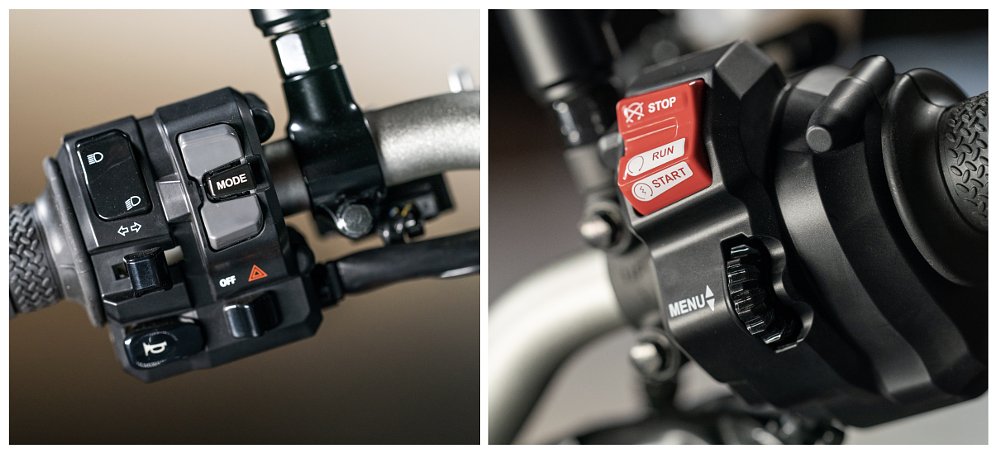
The new MT-09 leaves simplicity behind with the addition of an IMU that allows for cornering ABS, wheelie control (LIF, in Yamaha speak), and a slide control system (SCS) poached in part from the YZF-R1 superbike. Plus there’s good ol’ traction control. The three parameters associated with the engine (TC, LIF, and SCS) are embedded into modes, somewhat confusingly labelled “TCS.” Modes 1 and 2 are preset, and a Manual mode allows the rider to dial each of the three to preferred settings, which stick to the mode and are accessible by selecting “M” on the dash. On the move, too, if you like.
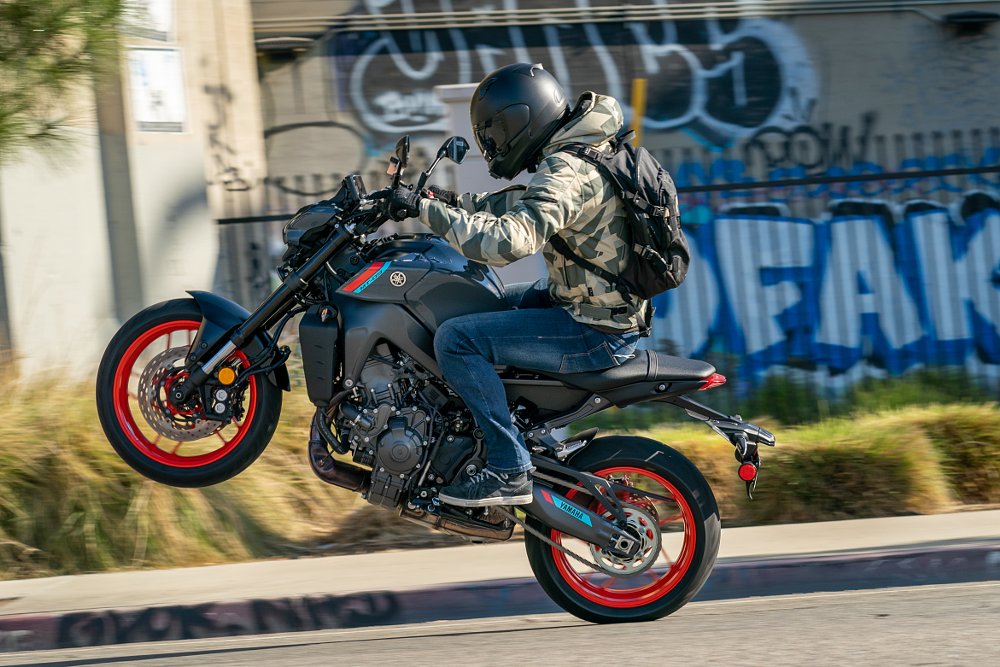
Now, keep in mind all of that is separate from BC settings (short for “brake control”), which denote the two levels of ABS — BC1 being "standard" and slightly less intrusive ABS, while BC2 is lean-angle-informed. And finally there are four throttle maps, 1 and 2 being similarly aggressive, 3 providing softer response but the same peak power, and 4 cutting peak power and offering the gentlest response. So many things. Also, there is a clock and you can adjust the fuel gauge by adding gasoline.
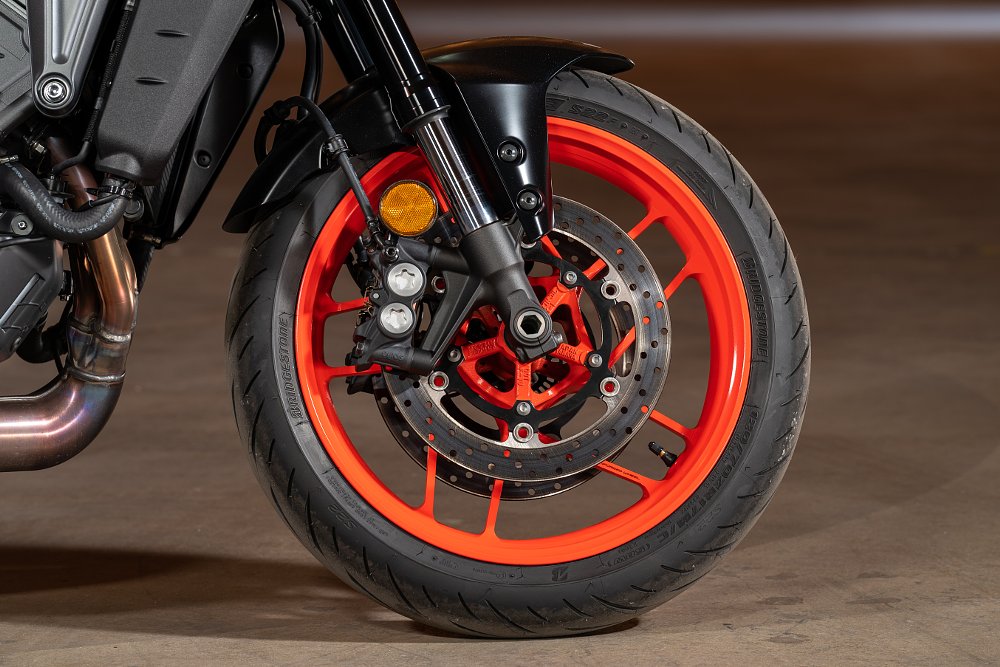
One thing the MT-09 does provide that’s fairly novel is the ability to hold down the toggle on the main screen of the dash and shut off all of the rider aids (except ABS). Some raw roots showing through, which I appreciate. I played with the TC and SCS as much as I could during a few hours of riding and less than 150 miles in the saddle, and though the systems work well, my take is Yamaha went overboard with the electronics. Lean-angle-sensitive ABS is undoubtedly going to save some riders’ hides over the years, and I think that’s great. But, slide control from the R1? On an MT-09? I just… don’t know. Logically, I get it, there’s an IMU on board now so why not put it to work, but I don’t think I can get behind the complication. The previous era of MT-09 had it right: One level of conservative TC and one that allows wheelies, plus off. That’s all we need here.
The paradox of progress
Whoof, I feel like I’ve laid a thick coat of criticism on the new MT-09 that's just about as bright as the wheels. Luckily, this is the part where I tell you I’m complaining about little things but the big stuff is good. I never thought the braking hardware was a huge problem on the old bike, but a new radial-pull Nissin master cylinder and beefy ADVICS calipers are more than up to the task of stopping the MT-09, which by the way has shed about eight pounds, even with all of the new kit baked in.
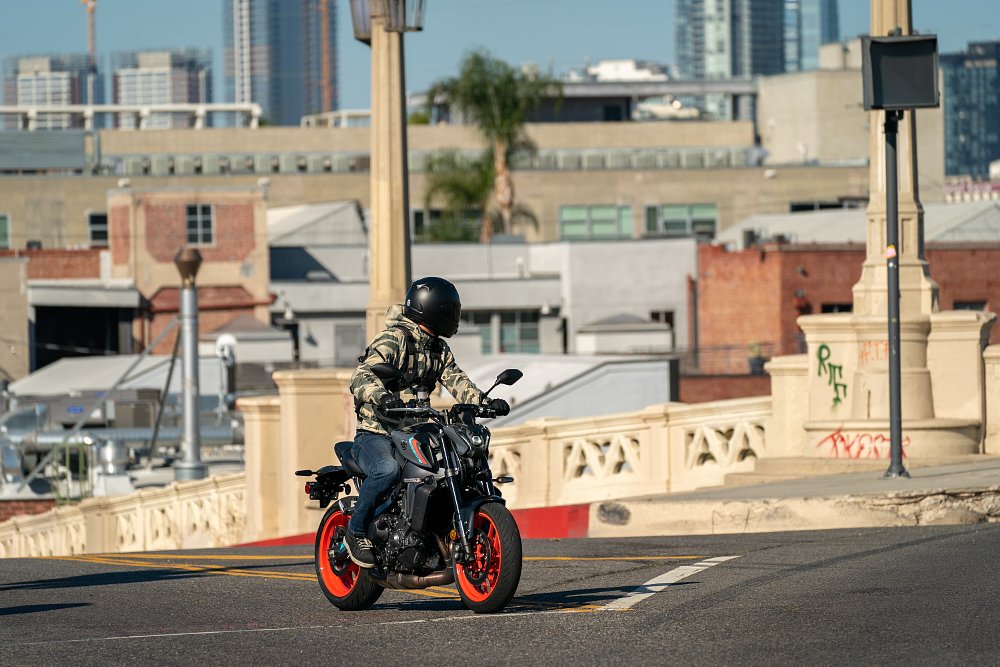
And as I said in the beginning, so much of what ailed the previous model was simply feeling loose and messy to ride. This overhauled version is tuned so much better it’s almost hard to compare the two. It’s gone from fun in the turns to downright competent — direct and agile and planted — for which Yamaha deserves a lot of credit. Plus, at $9,399 it’s only up $400 from last year. That’s a hundred bucks cheaper than an XSR900, actually, which has been out for years and uses the old chassis and tech (while we’re on the topic, $11,000 gets an SP version, with a fully adjustable Öhlins shock, polished swingarm, a fancy seat, and cruise control).
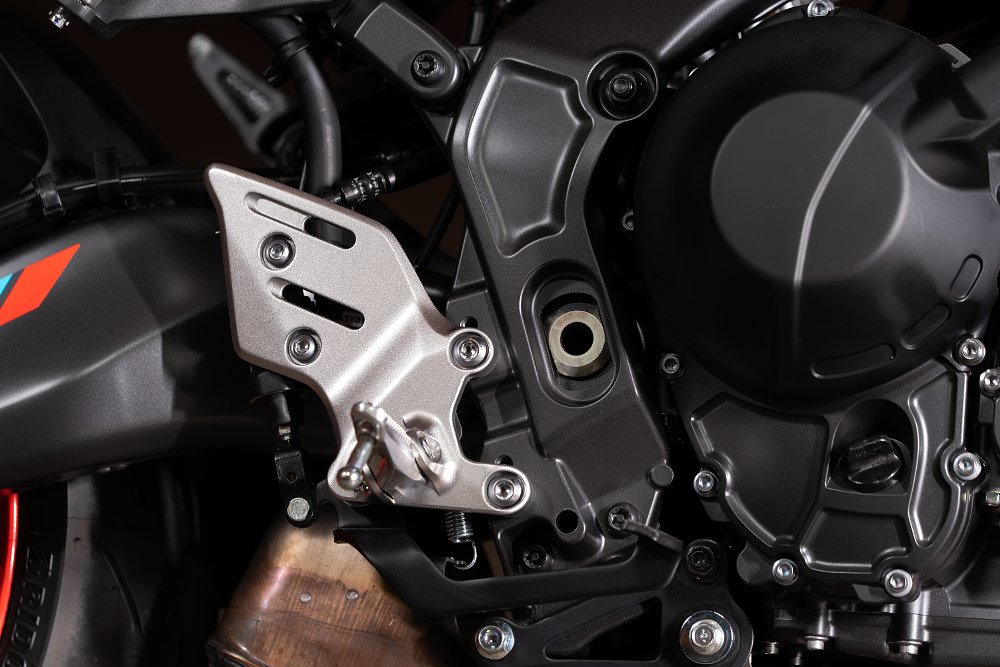
There are more things Yamaha quietly improved, too. I rode an Aprilia RS 660 to the launch of the MT-09, so that was my back-to-back comparo and I was amazed at how good the Yamaha quickshifter felt compared to the Aprilia's. The MT unit works great at low rpm, and for the most part responds pretty well to asking for two shifts in quick succession. I also like the dash, even if it’s puny in these high-tech times, because it’s easy to learn and offers good adjustability. For example, there are two little modules in the middle of the dash that can display any of the bike’s basic vital signs, from fuel gauge to trip meter to air temp, and a simple click and spin of the control wheel (on the fly, even) allows the rider to change what’s being shown. Customizable, yet simple.
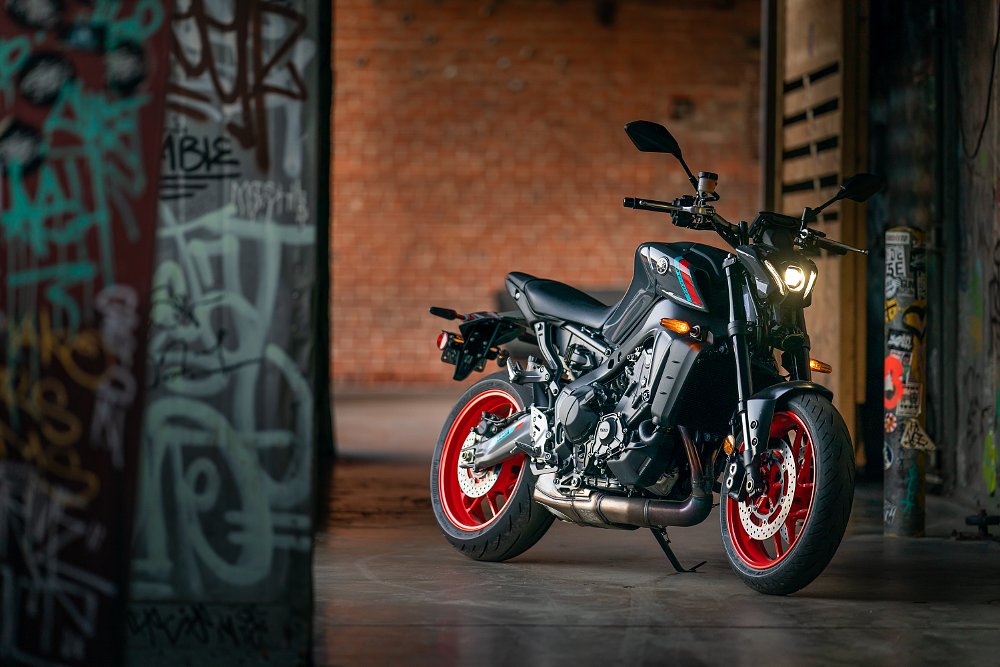
Here’s the really weird thing: I never thought I’d miss the things that were so bad about the old MT-09, but in scraping off a lot of the silliness this new edition almost feels too composed to be called an MT-09. Borderline reasonable. I like to believe I’m a mostly sensible motorcyclist who knows how to be objective, and I can’t believe there’s a part of my brain that longs for a bizarre snap wheelie or a hilarious plunge through the suspension stroke. I will recommend this bike much more often, to people I know and people I don’t, and yet I can’t shake the feeling of missing the old one already.
Maybe I’ll come around someday, if I repeat it enough times to myself — this new MT-09 is, as a matter of fact, better.
| 2021 Yamaha MT-09 | |
|---|---|
| Price (MSRP) | $9,399 |
| Engine | 890 cc, liquid-cooled, 12-valve, inline triple |
|
Transmission, final drive |
Six-speed, chain |
| Claimed horsepower | NA |
| Claimed torque | NA |
| Frame | Aluminum twin-spar |
| Front suspension | KYB 41 mm fork, adjustable for spring preload, compression and rebound damping; 5.1 inches of travel |
| Rear suspension | KYB shock, adjustable for spring preload and rebound damping; 4.8 inches of travel |
| Front brake | ADVICS four-piston calipers, 298 mm discs with ABS |
| Rear brake | Nissin single-piston caliper, 245 mm disc with ABS |
| Rake, trail | 25.0 degrees, 4.3 inches |
| Wheelbase | 56.3 inches |
| Seat height | 32.5 inches |
| Fuel capacity | 3.7 gallons |
| Tires | Bridgestone Battlax S22, 120/70-R17 front; 180/55-R17 rear |
| Claimed weight | 417 pounds |
| Available | Now |
| Warranty | 12 months |
| More info | yamahamotorsports.com |




















